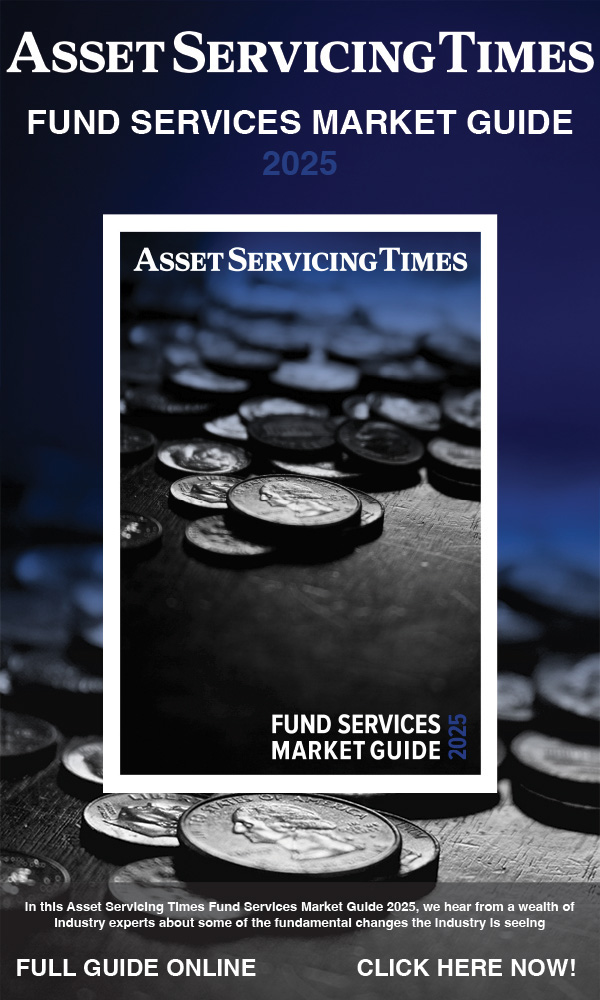T+1 for equities will be standard within five years, predicts Citi
11 October 2021 UK
 Image: Eigens
Image: Eigens
Some 50 per cent of market participants responding to a Citi survey predict that immediate settlement will be achievable within five years, and emerging technologies, such as distributed ledger technology (DLT), will be a key factor for enabling this (46 per cent).
In the survey, part of a whitepaper entitled “Securities Services Evolution”, 44 per cent of market participants surveyed expect the prevailing settlement timeframe for equities to be T+1 within the next five years.
Citi found that settlement compression continues to be one of the most pressing issues for the equities post trade industry, with the planned transition to T+1 in the US, together with the recent global volatility spikes.
The global bank also found that half of market participants (57 per cent) would require some investment for additional capability to accommodate any reduction in settlement cycle while only 29 per cent believed that their existing technology would be adequate.
While the pandemic has accelerated and condensed many existing efficiency and digitisation initiatives, it has also given rise to a “whole new set of previously unforeseen challenges”,Citi says, including managing through periods of higher volatility.
This combination of factors are driving market participants to re-examine how the settlement process could be accelerated and simplified to reduce risk.
Financial market infrastructures (FMIs) see the major benefit of reducing settlement cycles as risk reduction, which will in turn enable lower margin requirements and the release of capital, Citi cites.
However the bank found 44 per cent of market participants ranked greater efficiency in investment and trading processes as the greatest benefit of a shortened cycle for their respective organisations.
Most FMIs interviewed did not consider technology as a barrier to settlement compression as they had already undertaken considerable planning and investment in technology during the last transition (from T+3 to T+2).
Market participants however had an opposing view, with almost 50 per cent indicating that upgrading legacy technology would be a key factor.
The greatest challenge to achieving a shortened cycle from a FMI perspective was business process efficiency and alignment, in contrast to market participant respondents of whom only 10 per cent ranked this as a primary key factor, Citi highlights.
Market participants instead saw cash, funding and liquidity management as the greatest obstacle.
Most FMIs did not view DLT as necessarily essential for settlement compression, but drew a distinction between T+1 and T+0, only seeing a role for it concerning the latter.
However, 64 per cent of market participants believe a DLT-based market infrastructure would significantly or moderately improve overall market efficiency and reduce costs.
The whitepaper survey includes quantitative and qualitative data gathered from 15 FMIs and almost 400 market participants including as banks, broker-dealers, asset managers, custodians and institutional investors across Asia Pacific, Europe, Latin America and North America.
Okan Pekin, Citi’s global head of securities services, says: “Through extensive dialogue with our partners and clients, it is clear that there is an increased need in the industry to strengthen resilience, reduce risk and costs; and enhance efficiencies.”
He adds: “This paper not only highlights the benefits and challenges for a shortened settlement cycle, but also the associated emerging technologies and digitalisation efforts underway across the industry.”
Matthew Bax, global head of direct custody and clearing at Citi, comments: “We need to adapt to seismic shifts across every region by digitally transforming to deliver best-in-class experiences seamlessly across platforms for our clients, at scale.
“We have a deep sense of accountability for our clients, partners and network and are committed to providing post trade services through our network with global consistency.”
In the survey, part of a whitepaper entitled “Securities Services Evolution”, 44 per cent of market participants surveyed expect the prevailing settlement timeframe for equities to be T+1 within the next five years.
Citi found that settlement compression continues to be one of the most pressing issues for the equities post trade industry, with the planned transition to T+1 in the US, together with the recent global volatility spikes.
The global bank also found that half of market participants (57 per cent) would require some investment for additional capability to accommodate any reduction in settlement cycle while only 29 per cent believed that their existing technology would be adequate.
While the pandemic has accelerated and condensed many existing efficiency and digitisation initiatives, it has also given rise to a “whole new set of previously unforeseen challenges”,Citi says, including managing through periods of higher volatility.
This combination of factors are driving market participants to re-examine how the settlement process could be accelerated and simplified to reduce risk.
Financial market infrastructures (FMIs) see the major benefit of reducing settlement cycles as risk reduction, which will in turn enable lower margin requirements and the release of capital, Citi cites.
However the bank found 44 per cent of market participants ranked greater efficiency in investment and trading processes as the greatest benefit of a shortened cycle for their respective organisations.
Most FMIs interviewed did not consider technology as a barrier to settlement compression as they had already undertaken considerable planning and investment in technology during the last transition (from T+3 to T+2).
Market participants however had an opposing view, with almost 50 per cent indicating that upgrading legacy technology would be a key factor.
The greatest challenge to achieving a shortened cycle from a FMI perspective was business process efficiency and alignment, in contrast to market participant respondents of whom only 10 per cent ranked this as a primary key factor, Citi highlights.
Market participants instead saw cash, funding and liquidity management as the greatest obstacle.
Most FMIs did not view DLT as necessarily essential for settlement compression, but drew a distinction between T+1 and T+0, only seeing a role for it concerning the latter.
However, 64 per cent of market participants believe a DLT-based market infrastructure would significantly or moderately improve overall market efficiency and reduce costs.
The whitepaper survey includes quantitative and qualitative data gathered from 15 FMIs and almost 400 market participants including as banks, broker-dealers, asset managers, custodians and institutional investors across Asia Pacific, Europe, Latin America and North America.
Okan Pekin, Citi’s global head of securities services, says: “Through extensive dialogue with our partners and clients, it is clear that there is an increased need in the industry to strengthen resilience, reduce risk and costs; and enhance efficiencies.”
He adds: “This paper not only highlights the benefits and challenges for a shortened settlement cycle, but also the associated emerging technologies and digitalisation efforts underway across the industry.”
Matthew Bax, global head of direct custody and clearing at Citi, comments: “We need to adapt to seismic shifts across every region by digitally transforming to deliver best-in-class experiences seamlessly across platforms for our clients, at scale.
“We have a deep sense of accountability for our clients, partners and network and are committed to providing post trade services through our network with global consistency.”
Next clearing and settlement article →
DTCC argues for extension of central clearing in US treasury markets
DTCC argues for extension of central clearing in US treasury markets
NO FEE, NO RISK
100% ON RETURNS If you invest in only one asset servicing news source this year, make sure it is your free subscription to Asset Servicing Times
100% ON RETURNS If you invest in only one asset servicing news source this year, make sure it is your free subscription to Asset Servicing Times



